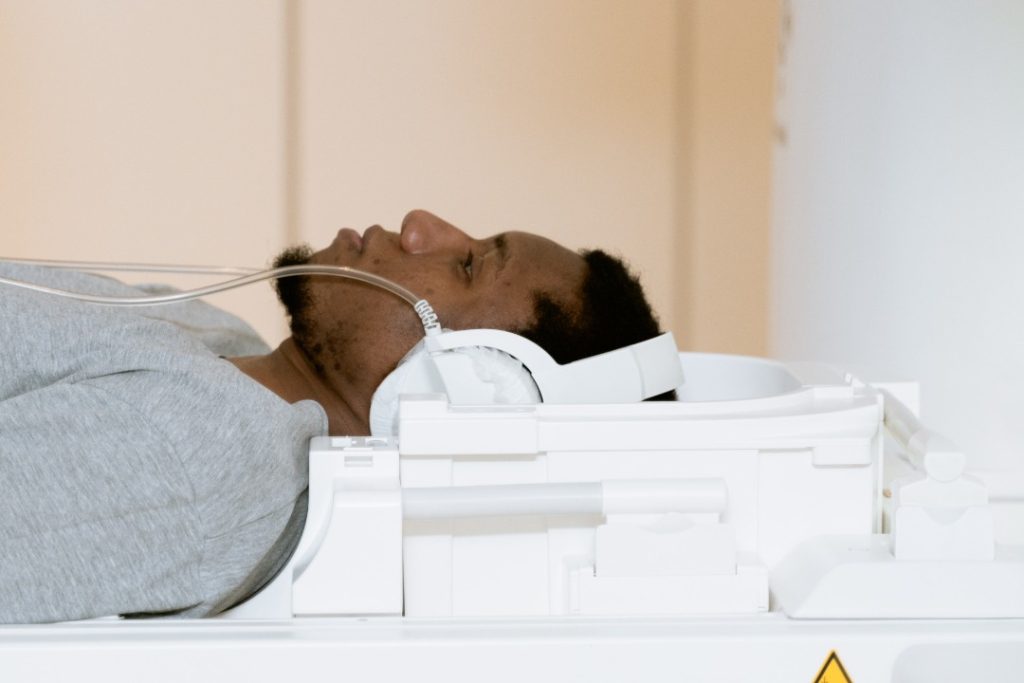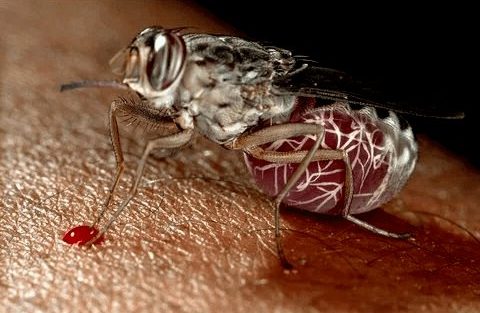Trypanosomiasis is a disease caused by a group of parasites called Trypanosoma Brucei. The two main types causing human disease are Trypanosoma Brucei Gambiensi & Trypanosoma Brucei Rhodesiensi. There are other types of Trypanosoma Brucei which cause animal disease and very occasionally infect humans.
The parasite is transmitted to humans through the bite of an infected tsetse fly (either male or female). The flies get infected when they bite a person or animal infected with the parasite. Domestic and wild animals can carry the parasite, and are important reservoirs of infection especially for Rhodesiensi; humans are the main reservoirs for Gambiensi. Very uncommonly, the infection can be transmitted from mother to baby, or through blood transfusions, infected needles and syringes, or sexually.
Presentation
There are two main stages of the disease; in the first or early stage, the parasite is found outside the central nervous system, mainly in the blood, lymphatic system or other organs such as the heart, liver, spleen, or eye. In the second or late stage, the parasite invades the central nervous system.
Initially, there can be a painful sore also called a chancre at the site of the tsetse fly bite. Symptoms of the first stage include: fever, muscle and joint pain, headaches, itching, and enlarged lymph nodes. It can lead to disease in the affected organ such as inflammation of the heart muscle, enlargement of the spleen and liver, and eye disease.

In the second stage, there can be a range of neurological symptoms such as changes in personality, psychiatric symptoms, weakness or problems with movement. The disease can affect sleep; patients tend to have night-time sleep disturbances & are sleepy during the day.
This can get progressively worse, with patients sleeping most of the time; this is why the disease is called sleeping sickness. If left untreated, the disease can lead to death. The severity of the disease, and how quickly the disease progresses from the first stage to the second stage depends on the type of parasite; in Rhodesiensi infections, it is quite fast, usually a few weeks. On the other hand, in Gambiensi infections, it may take several years. People who get infected may not have symptoms for months if not years. When they do, they are usually in the second stage
Diagnosis
The disease is diagnosed by laboratory techniques, usually by examining the blood under the microscope and looking for the parasite. This usually works well for Rhodesiensi infections, but harder to do for Gambiensi infections.
The classic method of diagnosing Gambiensi infections is by examining fluid from the lymph node under a microscope. Second stage infections can be diagnosed by examining cerebral spinal fluid. Blood tests that look for antibodies against the parasite can sometimes be used. Some other tests that can help diagnose Gambiensi infections include a Card Agglutination Test and a PCR test (PCR test that look for the genetic fingerprint of the parasite).
Treatment
There is a limited range or effective medication available to treat the disease. The type of medication used will depend on the type of the parasite and the stage of the disease. The disease is harder to treat once it has progressed to the second stage. The medication used is more toxic and complicated to administer.


